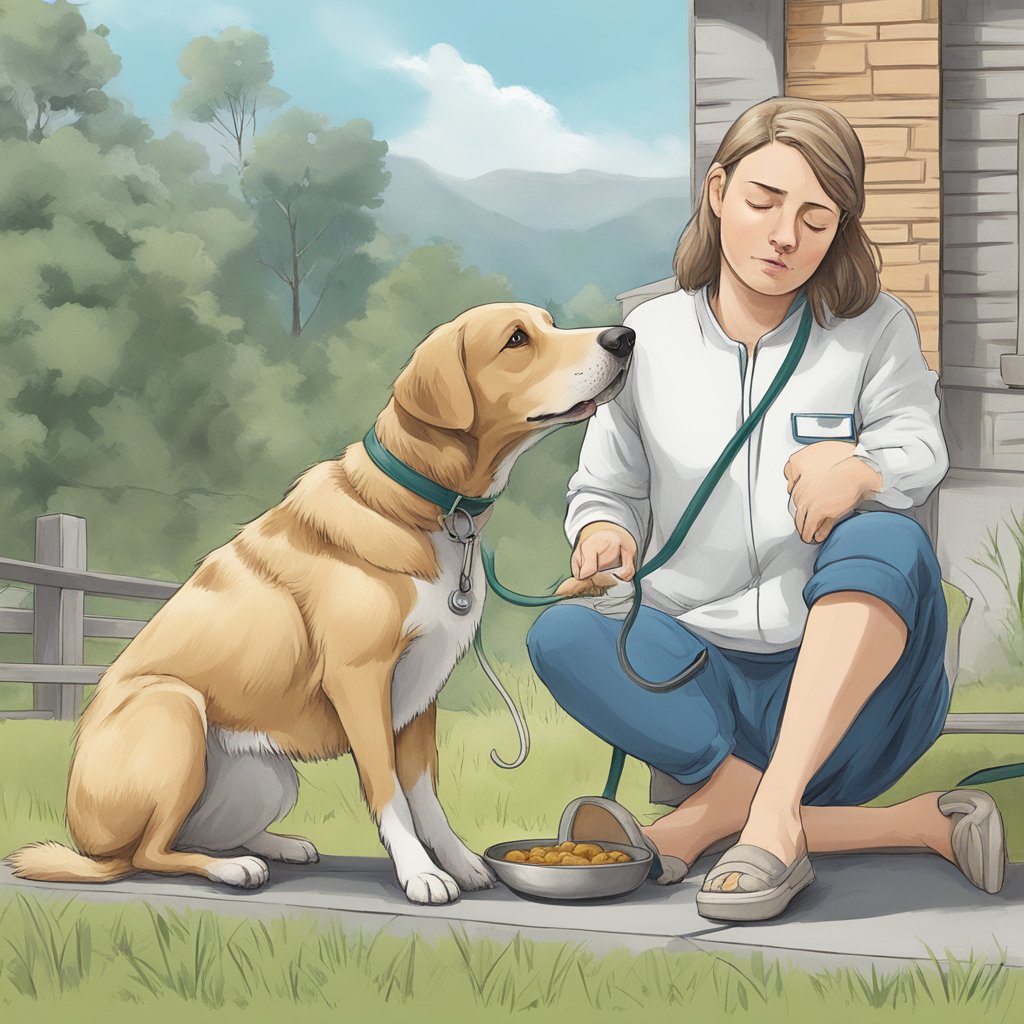What Are the Symptoms of Parvo in Dogs? Understanding Canine Parvovirus Signs

Parvovirus, commonly known as parvo, is a highly contagious viral illness affecting dogs, particularly puppies. The virus targets a dog’s gastrointestinal tract, leading to severe symptoms that can be life-threatening without prompt treatment. It’s crucial to recognize the symptoms early to provide your dog with the best chance of recovery. Among the most telltale signs of parvo in dogs are lethargy, loss of appetite, vomiting, fever, and severe, often bloody diarrhea.
Understanding the symptoms is the first step in combating this virus. When infected with parvo, a dog may exhibit a high fever, with normal canine temperatures ranging between 101 and 102.5 degrees Fahrenheit. The virus may also cause a dog to have red eyes and warm ears or nose. As the health of the dog declines, they might show signs of abdominal pain and bloating, both indicators of potential infection.
Key Takeaways
- Parvo is a serious viral infection that primarily affects puppies and can lead to severe gastrointestinal symptoms.
- Early recognition of parvo symptoms, such as lethargy, vomiting, and bloody diarrhea, is critical for prompt intervention.
- A dog with a fever, red eyes, or other signs of discomfort should be examined by a veterinarian for potential parvo infection.
Identifying Symptoms of Parvo in Dogs
Parvovirus in dogs presents a range of symptoms signifying a serious health threat. Early detection and prompt veterinary care are imperative for the best outcome.
Early Signs of Infection
Your dog may display initial signs of parvo infection such as lethargy and a loss of appetite. These early indicators can progress rapidly, and your prompt attention to changes in your dog’s energy levels and eating habits is crucial.
Gastrointestinal Manifestations
As parvo affects your dog’s gastrointestinal system, vomiting and diarrhea often occur. When the virus progresses, the stool may become bloody diarrhea, indicating severe irritation and potential damage to the intestinal lining. Monitor closely for signs of dehydration and abdominal pain, which may suggest the need for urgent veterinary intervention.
Systemic Impact on Canine Health
Parvo can lead to more systemic issues beyond the digestive system. A fever may develop as your dog’s body attempts to fight the infection. This systemic impact, combined with vomiting and diarrhea, can quickly lead to a dangerous state of dehydration, exacerbating the risk of secondary infections and other complications.
Diagnosis and Treatment Options
When your dog shows signs of illness, a timely and accurate diagnosis is crucial, followed by appropriate treatment to maximize the chances of recovery. Effective prevention strategies are also key in safeguarding the canine population against this potent virus.
Veterinary Diagnosis Procedures
Your veterinarian will use a combination of clinical signs and specific diagnostic tests to determine if your dog has parvovirus. The most common test is the ELISA (Enzyme-Linked Immunosorbent Assay), which detects the virus in feces and can provide results quickly. In some cases, to further assess the impact of the infection, additional tests like blood work or radiographs may be necessary.
Medical and Supportive Care
Immediate medical treatment is essential for infected dogs, and it often requires hospitalization. Treatment typically involves intravenous fluids to combat dehydration, antibiotics to prevent or fight secondary bacterial infections, and anti-nausea medications. There is no cure for the virus itself, so supportive care is focused on managing symptoms and complications to give your dog’s immune system time to fight off the infection.
Prevention and Vaccination Strategies
Prevention relies on good hygiene and vaccination strategies. Disinfect your environment to eliminate the virus from surfaces your dog contacts. Vaccinate your puppy and dog as recommended by your vet to develop immunity against parvovirus. An initial vaccine series followed by regular boosters is crucial as it significantly lowers the risk of infection and contributes to overall canine health and a better survival rate.
Frequently Asked Questions
When you suspect your dog may have parvovirus, recognizing the early symptoms and understanding the contagion risks are crucial. Quick action can significantly alter outcomes.
What are the initial symptoms indicating possible parvovirus infection in canines?
If your dog is showing lethargy, vomiting, and loss of appetite, these could be initial signs of parvovirus. These symptoms often precede more serious signs like fever and diarrhea.
How contagious is canine parvovirus and how can it affect other dogs?
Canine parvovirus is highly contagious and can spread through direct or indirect contact with infected dogs. Your dog can contract the virus from contaminated feces, environments, or even people’s clothing and shoes that have come in contact with the virus.
What does a dog’s stool look like when infected with parvovirus?
A dog’s stool may have a distinctive, foul odor when infected with parvovirus, often appearing loose and watery. It is your clue to act swiftly and consult a veterinarian.
What are the day-to-day progressions of parvo symptoms in infected dogs?
Symptoms may rapidly escalate from mild lethargy to severe vomiting and diarrhea within days. You must monitor your dog’s condition closely and seek veterinary assistance if you notice any progression of symptoms.
Can puppies and older dogs show different signs when infected with parvo?
Yes, both puppies and older dogs may exhibit varying signs of parvovirus. Puppies are more prone to severe symptoms due to their developing immune systems, while older dogs may experience milder symptoms but still require immediate care.
What steps should be taken to treat a dog diagnosed with parvovirus?
Immediate veterinary care is essential for a dog diagnosed with parvovirus. Treatment often involves hospitalization with supportive care including hydration, anti-nausea medications, and antibiotics.

